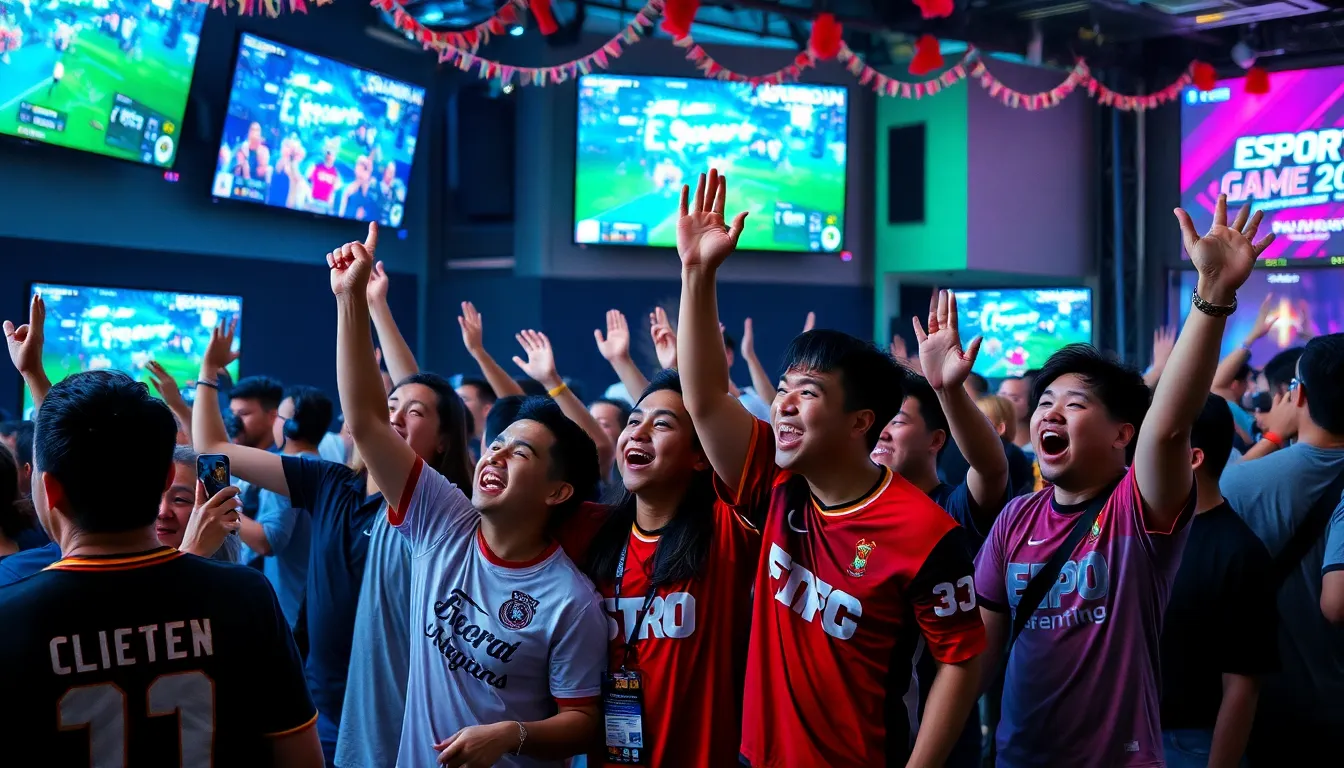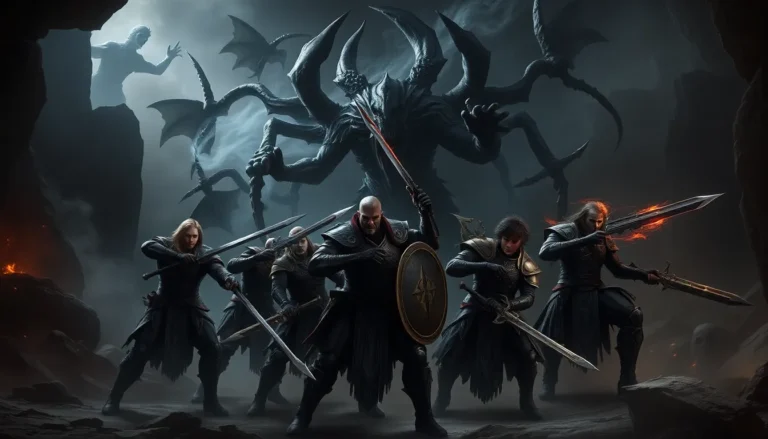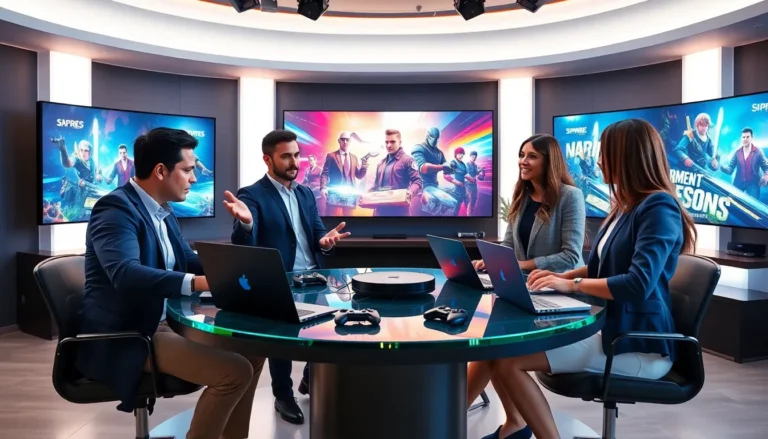In a world where gaming isn’t just a hobby but a full-blown sport, competitive gaming coverage has taken center stage. Picture this: millions of fans glued to their screens, cheering for their favorite teams, and debating strategies like seasoned analysts. It’s not just a game anymore; it’s a spectacle that rivals the Super Bowl—minus the halftime show and with a lot more pixelated explosions.
Table of Contents
ToggleOverview Of Competitive Gaming Coverage
Competitive gaming coverage involves various media formats designed to broadcast competitive esports events. Broadcasters use livestreaming platforms like Twitch and YouTube to reach global audiences. News outlets provide in-depth articles, player interviews and match analyses, ensuring fans stay engaged.
Major tournaments like The International and League of Legends World Championship attract millions of viewers, showcasing top talent. Various organizations, such as ESL and DreamHack, host events that highlight emerging games and established genres. Coverage of these events often includes commentary from experts, providing insights into strategies and player performances.
Statistics reveal that competitive gaming has transformed viewership metrics. In 2020, esports generated approximately 1 billion dollars in revenue. Viewers now expect high-quality production values with real-time updates and interactive elements. The integration of social media platforms enhances fan interaction, allowing real-time commentary and discussions.
Documenting player journeys also matters in competitive gaming coverage. Many outlets follow the rise and fall of professional gamers, adding depth to the narrative. Personal stories resonate with fans, creating a sense of connection and loyalty to teams and players. This goes beyond mere statistics; personal engagement enhances the overall viewing experience.
Through comprehensive coverage, the competitive gaming industry continues to evolve. Various formats, ranging from video summaries to detailed reports, serve diverse audience preferences. This ongoing engagement fosters a robust community around competitive gaming, ensuring its status as a leading entertainment phenomenon.
Importance Of Competitive Gaming Coverage

Competitive gaming coverage plays a vital role in the rising popularity of esports. It engages fans and enhances their connection with teams and players.
Audience Engagement
Fan interaction drives the success of esports coverage. Livestreaming platforms enable real-time commentary and discussions, creating a dynamic viewing experience. Top events, such as The International, attract millions of viewers, fostering a sense of community among fans. Viewers actively participate through chat features, social media, and forums. They discuss strategies, analyze performances, and celebrate victories together. This engagement not only boosts viewership numbers but also cultivates loyalty among supporters. Organizations recognize this impact and tailor their content to meet audience expectations, ensuring they remain an integral part of the competitive gaming landscape.
Industry Growth
Competitive gaming coverage significantly contributes to industry expansion. In 2020, the industry generated around $1 billion in revenue, showcasing its financial potential. Major tournaments and events attract sponsorships and partnerships, bolstering financial support. High-quality broadcasts elevate production standards, drawing in new viewers. Diverse media formats, including podcasts, articles, and video content, cater to various audience preferences, expanding reach. As esports continue to grow, organizations invest in innovative coverage strategies, paving the way for future developments. This commitment to coverage ensures competitive gaming maintains its position as a leading entertainment phenomenon, solidifying its importance within the broader sports industry.
Types Of Competitive Gaming Coverage
Competitive gaming coverage encompasses various media formats tailored to engage audiences and enhance the viewing experience. The evolution of esports necessitates an understanding of these distinct types.
Streaming Platforms
Streaming platforms dominate competitive gaming coverage by offering real-time broadcasts of major events. Twitch, YouTube, and Facebook Gaming engage millions with their interactive features, allowing fans to participate actively. They provide chat functions where viewers share insights and reactions during gameplay. Streamers often build loyal communities around their favorite games, fostering deep connections among fans. Major tournaments, like The International and League of Legends World Championship, attract substantial audiences, showcasing top-tier talent. High-quality production values, including multi-camera angles and expert commentary, elevate the viewing experience. These platforms capitalize on audience expectations for instant access to content, ensuring fans stay connected to the action.
Traditional Media
Traditional media also plays a significant role in competitive gaming coverage. Television channels and sports networks are now broadcasting esports events, expanding their reach. In-depth articles and analyses appear in sports magazines and online outlets, enriching fan knowledge about teams and players. Player interviews feature prominently, providing insights into strategies and rivalries that captivate audiences. Regular coverage from dedicated esports news sites ensures fans remain informed about emerging trends and results. Documentaries and highlight reels present a storyline, keeping viewers engaged in the narratives woven around competitive gaming. As esports gains recognition, traditional media adapts to include this burgeoning sector, bridging the gap between classic sports and modern gaming.
Challenges In Competitive Gaming Coverage
Competitive gaming coverage faces several challenges that impact its effectiveness. These challenges affect engagement and audience satisfaction.
Coverage Consistency
Maintaining coverage consistency proves difficult in competitive gaming. Event schedules can change rapidly, making it challenging for broadcasters to keep audiences updated. High-profile tournaments often overlap, creating scheduling conflicts that dilute viewer attention. Organizations must invest in reliable communication strategies to ensure fans receive timely updates about match times and player availability. Inconsistent performance quality among different streaming platforms can frustrate viewers, as they may experience varying production values. Ensuring a unified and stable broadcasting experience remains essential for building trust with the audience.
Viewer Understanding
Viewer understanding of gameplay intricacies represents another challenge in competitive gaming coverage. Many esports have complex mechanics that can alienate casual viewers. Providing clear and accessible explanations during broadcasts engages non-gamers and retains their interest. Commentators play a crucial role, as their ability to articulate strategies and player actions influences audience comprehension. Offering additional resources, like on-screen tutorials or player profiles, enhances viewer knowledge and enjoyment. Improving viewer understanding ultimately fosters a more engaged audience and encourages long-term interest in competitive gaming.
Future Trends In Competitive Gaming Coverage
Future trends in competitive gaming coverage reflect a dynamic landscape shaped by technology and audience preferences.
Technological Advancements
Innovations in technology enhance how audiences experience competitive gaming. Virtual reality and augmented reality promise immersive viewer interactions with gameplay. Furthermore, improvements in streaming quality, like 4K resolution, elevate visual clarity and engagement. Organizations increasingly utilize advanced analytics to provide deeper insights into player statistics and game strategies. This data-driven approach assists commentators in delivering real-time analysis, keeping fans informed and entertained. Broadcasters leverage interactive features, allowing viewers to customize their experiences during events. Gamification elements, such as live polls and interactive chats, deepen audience involvement, promoting a sense of community among fans.
Evolving Audience Preferences
Changing audience preferences shape the future of competitive gaming coverage. Viewers increasingly gravitate toward content that prioritizes accessibility and engagement. Short-form content, like highlight reels and expert breakdowns, caters to audiences’ desire for quick insights. Fans value transparency, seeking behind-the-scenes content that reveals player strategies and team dynamics. Additionally, rising interest in localized coverage fosters connections between fans and their favorite players and teams. The demand for diverse formats, including podcasts and social media snippets, reflects a shift toward multi-platform engagement. Brands that adapt to these preferences position themselves as leaders in the evolving competitive gaming arena.
Competitive gaming coverage has become a cornerstone of the esports industry. It not only enhances fan engagement but also drives the growth of the sector. As organizations adapt to evolving technologies and audience preferences, the quality and accessibility of coverage will continue to improve.
With the rise of immersive experiences and real-time analytics, viewers will enjoy deeper connections with their favorite teams and players. The ongoing innovation in broadcasting formats ensures that competitive gaming remains at the forefront of entertainment. As this dynamic landscape evolves, it will undoubtedly attract even more fans and sponsors, solidifying esports as a dominant force in the entertainment world.





